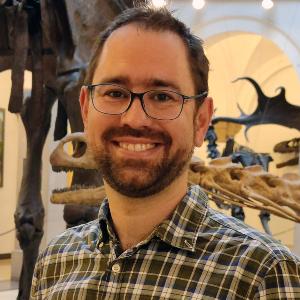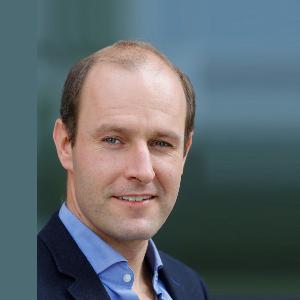Four new ERC grants at LMU
10 Jan 2022
Four talented early-career researchers have obtained prestigious starting grants together with LMU from the European Research Council.
10 Jan 2022
Four talented early-career researchers have obtained prestigious starting grants together with LMU from the European Research Council.
Four talented early-career scientists from various disciplines have each obtained a starting grant together with LMU for their research. Awarded by the European Research Council (ERC), the project grant is worth approximately 1.5 million euros in each case. Winners are chosen based on the scientific excellence of the applicants and of the proposed project. The research grant is among the most prestigious awards of its kind in Europe.
The successful scientists in this round are already working at LMU: Dr. Joanna Drążkowska, Faculty of Physics, Dr. Sebastian Höhna, Faculty of Geosciences, Prof. Daniel Merk, Faculty of Chemistry and Pharmacy, and Dr. Liang Emlyn Yang, Faculty of Geosciences.

Astrophysicist Dr. Joanna Drążkowska works as a postdoctoral researcher at LMU’s University Observatory. Her research helps improve our fundamental understanding of planet formation.
Numerous discoveries of exoplanets over the past few years have proven that planet formation is the rule rather than an exception. At the same time, astrophysicists have made huge progress in observations of the birthplaces of planets and learned more about the risks that prevail specifically in the environment around young stars. Despite these important discoveries, the planet formation process as a whole remains a conundrum as its intermediate stages are essentially unobservable.This is where Joanna Drążkowska comes in with PLANETOIDS (“Formation of planetary building blocks throughout time and space”). Her ERC project aims at constructing innovative numerical models of the early stages of planet formation when the dust grows to pebbles and eventually becomes gravitationally bound in building blocks of planets called planetesimals. Global models are scarce for this important phase of planet formation. PLANETOIDS proposes to go beyond the state of the art by combining the most advanced models of circumstellar disk formation and structure, dust evolution, planetesimal formation, and planetesimal growth in one comprehensive framework. The key questions to be investigated are: How does dust grow and circulate in wind-driven circumstellar disks? Where, when, and how many planetesimals can emerge, and how does this result depend on the properties and environment of the host star? And finally: What pathways to fast planet formation could there be? From her models, the astrophysicist hopes to obtain decisive results that shed light on the origin of our solar system and the diversity of exoplanets.
Joanna Drążkowska studied astronomy at the Nicolaus Copernicus University in Toruń, Poland, and received her doctoral degree in 2014 from the Institute of Theoretical Astrophysics at the University of Heidelberg. After three years as a postdoctoral researcher at the “PlanetS” National Centre of Competence in Research at the University of Zurich, she moved in 2018 to LMU’s University Observatory to work under the guidance of Professor Til Birnstiel. In 2021, Joanna Drążkowska received the A&A (Astrophysics & Astronomy) Early Career Award.

Dr. Sebastian Höhna heads an Emmy Noether research group at the GeoBio-Center at LMU. One focus of his work is on the development of new statistical models and software for investigating the phylogenetic history of living organisms.
Biodiversity is modeled by the process of speciation and extinction.There is clear evidence from both living and extinct species that biodiversity is extremely variable through time and among species. However, we still do not know what factors drive speciation and extinction rates on a macroevolutionary level (that is, beyond species boundaries). In his MacDrive project, Sebastian Höhna proposes to combine statistical, computational, neontological – i.e. relating to species living today – and paleobiological approaches to study macroevolutionary dynamics. Höhna plans to develop new statistical models to estimate time varying and lineage-specific speciation and extinction rates. To test the new methods, he will analyze the evolution of four large systematic groups and investigate whether diversification and extinction rates are correlated with environmental factors or species-specific traits. Ultimately, Höhna will test if specific traits are correlated with mass extinction survival probabilities, as for example the Lilliput Effect predicts smaller species to have higher survival probabilities. With his project, Höhna wants to contribute to a better understanding of the effects of the current biodiversity crisis.
Sebastian Höhna studied informatics at the Berufsakademie Berlin and computer science at the University of Auckland (New Zealand). In 2013, he completed his doctorate in mathematical statistics at Stockholm University (Sweden). As a postdoc, Höhna did research at the University of California (Davis and Berkeley) before taking up a position as research group leader at LMU in 2017.

Prof. Daniel Merk is Chair of Pharmaceutical and Medicinal Chemistry at LMU. His main research areas are the targeted modulation of transcription factors using small molecules and the application of artificial intelligence (AI) for molecular design.
Neurodegenerative diseases such as Alzheimer’s, Parkinson’s, and multiple sclerosis are severe health burdens for patients and major global challenges for societies. No treatment strategy has yet been developed that can halt or reverse the progress of neurodegeneration. As such, new therapeutic approaches are needed more than ever, but they are hindered by the lack of suitable, pharmacologically validated targets. It is exactly this gap that Merk aims to close with the ERC project NeuRoPROBE. He is focusing on two transcription factors (TLX and Nurr1) as promising candidate targets, but tools to pharmacologically control their activity are lacking. The pharmaceutical chemist proposes to develop such tools. For the molecular design of these special molecules – so-called chemical probes and PROTACs – he plans to use artificial intelligence to accelerate the development process. He will then apply the new tools in on-a-chip models of neurodegeneration to control the activity of TLX and Nurr1 and further validate their modulation in neurodegeneration.
Daniel Merk studied Pharmaceutical Sciences and Pharmacy at LMU and completed a doctorate in Pharmaceutical/Medicinal Chemistry at Goethe University Frankfurt in 2015. Subsequently, he conducted research at ETH Zürich and as a group leader at Goethe University Frankfurt, before moving to LMU in 2021.

Dr. Liang Emlyn Yang is a scientist and lecturer at the Human-Environment Relations research and teaching unit in the Department of Geography at LMU.
Existing studies on how societies deal with the issue of flooding overwhelmingly concentrate on risk, exposure, vulnerability, damage, loss, and adaptation needs, most of which adopt a negative perspective. Yet the populations living at coasts, river deltas, flood plains, and hilly valleys – i.e. a wide variety of regions that are potentially threatened by flooding – have not only survived, but actually prospered. Despite many of such examples, there has been a dearth of systematic studies undertaken on them. Liang Emlyn Yang wants to close this research gap and analyze this form of societal resilience to flood hazards with a historical perspective. In his ERC project SToRes (Spatial-Temporal Dynamics of Flood Resilience), he proposes an innovative resilience thinking (instead of risk thinking) in flood studies, and aims to play a pioneer role in the emerging research field of flood resilience science. As a primary case study, he will look at the historical Tea Horse Road area, a mountainous region of the Southeast Tibetan Plateau. The region is ideal for studying the spatial-temporal dynamics of flood resilience. With its well-documented history going back over 600 years, the case study makes it possible to investigate the phenomenon using a differentiated analysis at the level of household, community, city, and region and with regard to governance, technology, social structure, and culture. To this end, Liang Emlyn Yang will further develop agent-based models and social network analysis to detect the spatial patterns and temporal evolution of flood resilience, using historical archives, scientific literature, as well as statistical data and material from field surveys. Beyond the case study, the findings from the empirical study and the quantitative models will be transferred to other problem regions such as the Mekong Delta, thereby making an up-to-the-minute contribution to research into human-environment relations.
Liang Emlyn Yang graduated from the Southwest University in Chongqing, China, and did his master’s degree at the Chinese Academy of Sciences in Beijing. He obtained his doctorate at the University of Hamburg, where he initially worked at the Institute of Geography and at the Department of Mathematics. Subsequently, he moved as a postdoctoral researcher to the Graduate School “Human Development in Landscapes” at Kiel University, before coming to LMU in 2019.